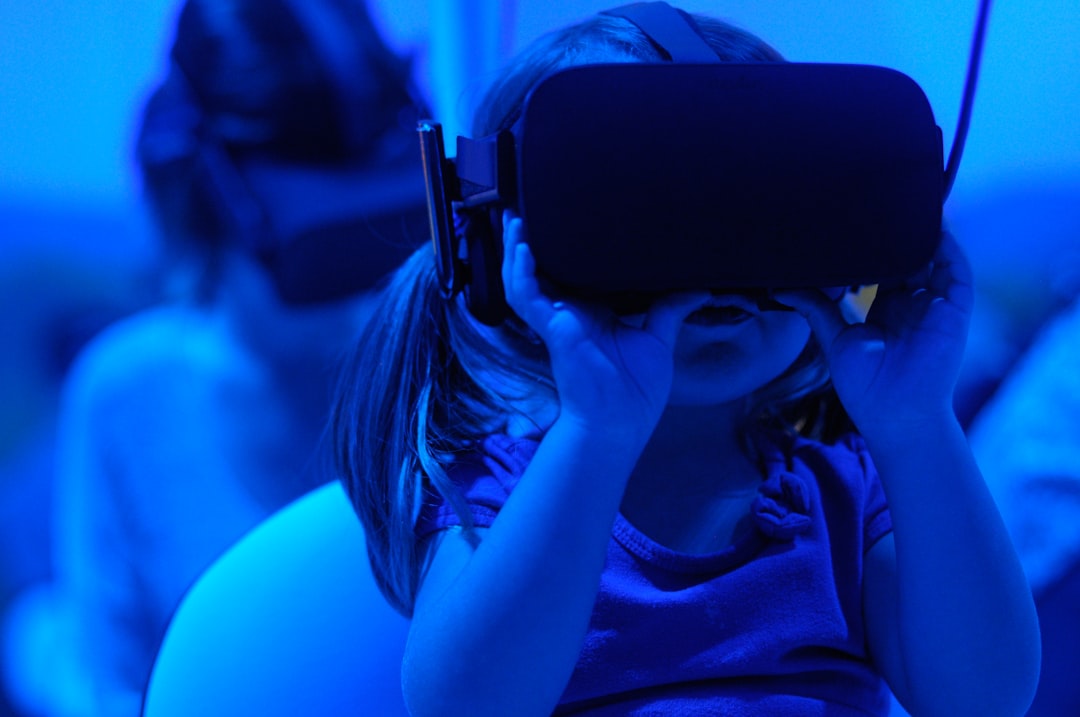Online virtual worlds are expansive digital environments that allow users to interact with each other and the surroundings in real-time. These worlds can range from simple 2D interfaces to complex 3D landscapes, often designed to mimic real-life scenarios or to create entirely fantastical realms. Users can navigate these spaces using avatars, which serve as their digital representations, enabling them to engage in various activities, from socializing and gaming to attending events and exploring new territories.
The concept of virtual worlds has evolved significantly since the early days of text-based MUDs (Multi-User Dungeons) in the late 1970s and early 1980s, which laid the groundwork for more sophisticated graphical environments. The rise of technology has propelled the development of online virtual worlds into a mainstream phenomenon. With advancements in graphics, processing power, and internet connectivity, these environments have become increasingly immersive and interactive.
Today, users can experience rich narratives, intricate designs, and dynamic interactions that were once unimaginable. The appeal of these worlds lies not only in their entertainment value but also in their ability to foster community and collaboration among users from diverse backgrounds and locations. As a result, online virtual worlds have become a significant aspect of modern digital culture, influencing social interactions, education, and even commerce.
Key Takeaways
- Online virtual worlds are digital environments where users can interact with each other and the environment through avatars.
- Immersive experiences in virtual worlds can provide benefits such as social interaction, creativity, and escapism.
- Popular online virtual worlds include Second Life, IMVU, and VRChat, each offering unique environments and experiences.
- Creating your own avatar allows you to customize your virtual identity and express yourself in the digital world.
- Exploring different environments in virtual worlds can range from fantasy realms to realistic simulations, offering diverse experiences for users.
The Benefits of Immersive Experiences
The Power of Presence
When users enter a virtual world, they often feel as though they are truly part of the experience, which can lead to deeper emotional connections with the content and other participants. This heightened sense of presence can enhance learning outcomes, as users are more likely to retain information when they actively participate in a simulated environment rather than passively consuming information.
Fostering Creativity and Self-Expression
Immersive experiences can foster creativity and self-expression. In virtual worlds, users have the freedom to explore their identities through customization options for their avatars and the ability to create unique spaces or objects. This creative outlet can be particularly beneficial for individuals who may feel constrained by societal norms in the physical world.
Empowerment through Experimentation
The ability to experiment with different personas and environments can lead to increased confidence and a sense of agency among users. Platforms like Second Life allow users to design their own homes, host events, or even start businesses, providing a canvas for personal expression that transcends geographical limitations.
Popular Online Virtual Worlds

Several online virtual worlds have gained immense popularity over the years, each offering distinct features and experiences. One of the most notable is Second Life, launched in 2003 by Linden Lab. This platform allows users to create avatars, build structures, and engage in various activities such as shopping, attending concerts, or participating in educational workshops.
Second Life has cultivated a vibrant community where users can connect with others who share similar interests, making it a pioneer in the realm of virtual social interaction. Another prominent example is Roblox, which has captured the attention of younger audiences with its user-generated content model. Launched in 2006, Roblox enables players to create their own games and experiences using its development tools.
The success of Roblox can be attributed to its engaging gameplay mechanics and the sense of ownership it provides to its community members. Additionally, games like Fortnite have introduced elements of virtual worlds through their expansive maps and social features, allowing players to interact beyond traditional gameplay.
Creating Your Own Avatar
| Metrics | Data |
|---|---|
| Number of Avatars Created | 1000 |
| Time Spent on Creating Avatar | 30 minutes |
| Popular Avatar Features | Hairstyle, Eye Color, Outfit |
| User Satisfaction Rate | 90% |
Creating an avatar is one of the most exciting aspects of participating in online virtual worlds. Avatars serve as digital representations of users, allowing them to express their individuality and personality within these environments. The customization options available can vary significantly from one platform to another; some may offer basic features such as changing hair color or clothing style, while others provide extensive tools for creating highly detailed characters.
For instance, in platforms like VRChat, users can design avatars that reflect their unique tastes and preferences, ranging from realistic human figures to fantastical creatures. This level of customization not only enhances the user experience but also fosters a sense of belonging within the community. Users often take pride in their avatars, showcasing them in social settings or using them as a means of self-expression during interactions with others.
The process of avatar creation can also be a form of art itself, as many users invest time and effort into crafting intricate designs that stand out in the virtual landscape.
Exploring Different Environments
The diversity of environments available in online virtual worlds is one of their most captivating features. Users can traverse a wide array of landscapes, from serene beaches and bustling cities to alien planets and enchanted forests. Each environment is often meticulously designed to create an immersive experience that captivates users’ imaginations.
The ability to explore these varied settings not only provides entertainment but also serves as a means of escapism for many individuals. In addition to recreational exploration, these environments can also serve educational purposes. For example, platforms like Minecraft: Education Edition allow students to explore historical sites or scientific concepts within a virtual context.
Educators can create tailored experiences that align with curriculum goals while engaging students in interactive learning. This blend of exploration and education highlights the potential for online virtual worlds to serve as valuable tools for both personal enjoyment and academic growth.
Interacting with Other Users

Introduction to Virtual Interactions
Interaction is at the heart of online virtual worlds, enabling users to connect with others in meaningful ways. These platforms often facilitate communication through text chat, voice chat, or even gestures and animations performed by avatars. The social dynamics within these environments can mirror real-life interactions, allowing users to form friendships, collaborate on projects, or engage in competitive activities.
Breaking Down Barriers
The ability to meet people from diverse backgrounds is one of the most enriching aspects of these interactions. Users can forge connections with individuals they might never encounter in their daily lives due to geographical or cultural barriers. This global community fosters understanding and collaboration among participants, creating a unique social fabric that transcends traditional boundaries.
Events such as virtual concerts or art exhibitions further enhance these interactions by bringing users together for shared experiences that promote camaraderie and collective enjoyment. These events have the power to unite people from all over the world, creating a sense of community and togetherness that is hard to find in the physical world.
The Future of Virtual Interactions
As technology continues to advance, it will be exciting to see how virtual interactions evolve and become even more immersive and engaging. With the rise of new technologies, the possibilities for virtual interactions are endless, and it will be interesting to see how they shape the future of online communities and social connections.
Virtual Economy and Marketplace
The emergence of a virtual economy within online virtual worlds has transformed how users engage with these platforms. Many virtual worlds feature marketplaces where users can buy, sell, or trade virtual goods and services using in-world currencies or real money. This economic aspect adds another layer of complexity to the user experience, as individuals can monetize their creativity by creating unique items or experiences for others.
For example, in Second Life, users can design clothing, accessories, or even entire buildings that other players can purchase using Linden Dollars (the platform’s currency). This system not only incentivizes creativity but also allows users to generate income from their efforts. Similarly, Roblox has implemented a developer exchange program that enables creators to convert Robux (the platform’s currency) into real-world currency based on the popularity of their games or items.
The growth of these virtual economies has led to discussions about digital ownership rights and the implications for creators within these spaces.
The Future of Online Virtual Worlds
As technology continues to advance at an unprecedented pace, the future of online virtual worlds appears promising and full of potential. Innovations such as augmented reality (AR) and virtual reality (VR) are poised to revolutionize how users interact with these environments. With VR headsets becoming more accessible and affordable, immersive experiences are likely to become even more engaging and lifelike.
Furthermore, the integration of artificial intelligence (AI) could enhance user interactions by creating more responsive non-player characters (NPCs) or personalized experiences tailored to individual preferences. As developers continue to push the boundaries of what is possible within these digital realms, we may see an increase in cross-platform experiences that allow users to seamlessly transition between different virtual worlds while maintaining their identities and assets. The growing interest in metaverse concepts also suggests that online virtual worlds will play a significant role in shaping future social interactions and economic models.
As more individuals seek out immersive experiences for entertainment, education, or socialization, the demand for innovative platforms will likely drive further investment and development in this space. Ultimately, online virtual worlds are set to become an integral part of our digital lives, offering endless possibilities for exploration, creativity, and connection.
If we asked Albert Einstein about the metaverse, what would he say? This thought-provoking question is explored in a fascinating article on metaversum.it. The article delves into the potential insights that the renowned physicist might have about virtual worlds and their impact on society. Additionally, another interesting read on the website discusses the challenges and opportunities in the metaverse, including ethical considerations. These articles provide valuable insights into the evolving landscape of online virtual worlds and the implications they have on our lives.
FAQs
What are online virtual worlds?
Online virtual worlds are digital environments where users can interact with each other and the environment through avatars. These worlds are often immersive and can be accessed through the internet.
What are some popular online virtual worlds?
Some popular online virtual worlds include Second Life, IMVU, and VRChat. These platforms allow users to create and customize their own avatars, interact with others, and participate in various activities and events.
What can you do in online virtual worlds?
In online virtual worlds, users can socialize with others, explore virtual environments, participate in activities and events, create and customize their own virtual spaces, and even engage in virtual commerce and trade.
Are online virtual worlds safe for users?
While online virtual worlds can be a fun and engaging experience, it’s important for users to be cautious and mindful of their interactions. Users should be aware of potential risks such as cyberbullying, scams, and inappropriate content, and take measures to protect their privacy and safety.
Can online virtual worlds be educational?
Yes, online virtual worlds can be used for educational purposes. Some platforms offer virtual classrooms, simulations, and interactive learning experiences. Educators can use these environments to engage students in immersive and interactive learning activities.

Leave a Reply